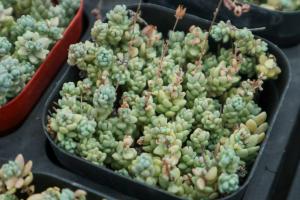How to Top Tomatoes Plants
Tomatoes are a beloved fruit that can be found in dishes all around the world. Growing tomatoes in your garden can be a fun and enjoyable experience, but it's essential to know how to maintain the plants to ensure a healthy and robust harvest. One process that many tomato growers implement is topping. Topping tomato plants means that you're removing the growing tip or terminal bud from the plant. In this article, we'll go over why topping is necessary and how to do it effectively.
Why Top Tomato Plants?
There are a few reasons why you might want to top your tomato plants. The main reason that people choose to top their plants is because it encourages the plant to put more energy and nutrients into fruit production rather than growth. When you remove the top growing tip of the tomato plant, it signals to the plant that it should focus on ripening existing fruit rather than creating more branches and leaves.
Topping can also help prevent diseases and pests from affecting your tomato plant. A dense canopy of leaves can attract pests like spider mites, aphids, and whiteflies, and they can quickly multiply and cause damage. Topping your tomato plants can help the sun and airflow penetrate the foliage, which can reduce the risk of fungal and bacterial diseases that thrive in humidity and darker environments.
When to Top Tomato Plants?
The best time to top tomato plants is when they're young and have reached a height of around 3-4 feet. Topping is a process that should be done before the tomato plant gets too big, or the shock of topping can cause the plant to slow down its growth rate. It's also important to wait until the plant has developed a few sets of leaves or true leaves since the first few sets are crucial for photosynthesis.
It's best to avoid topping during periods of stress for the tomato plant, such as drought, high heat, or high humidity. These conditions can put additional stress on the plant, and the shock of topping may result in less fruit production.
How to Top Tomato Plants
Now that you know why and when to top tomato plants, let's discuss how to do it effectively. You'll need a clean pair of pruning shears or scissors, gloves, and possibly a ladder if your tomato plant has grown too tall for easy access.
Identify the top growing tip or terminal bud of the tomato plant. It should be located at the very top of the main stem or the stem of the highest branch.
Use your pruning shears or scissors to cut off the top of the plant just above the highest set of leaves. Be sure to make a clean cut and avoid damaging the stem or foliage.
If your tomato plant has grown too tall, you can remove the top of the plant and remove some lower stems and leaves to promote airflow and light penetration to the interior of the plant. This process is called thinning.
Dispose of the removed plant material properly, either by composting or discarding it in the trash.
Monitor the plant for the next few days and weeks to ensure that it's adjusting to the cut. You may see it begin to divert its energy toward ripening existing fruit and producing new flowers.
Conclusion
Topping tomato plants can be a useful technique for encouraging fruit production, reducing disease and pest risks, and promoting healthy plant growth. By understanding why and when to top and following the proper steps for cutting, you can ensure that your tomato plants thrive and produce a bountiful harvest. Remember to always use clean pruning shears or scissors, wear gloves, and dispose of any removed plant material appropriately.

 how many times do yo...
how many times do yo... how many planted tre...
how many planted tre... how many pine trees ...
how many pine trees ... how many pecan trees...
how many pecan trees... how many plants comp...
how many plants comp... how many plants can ...
how many plants can ... how many plants and ...
how many plants and ... how many pepper plan...
how many pepper plan...
































